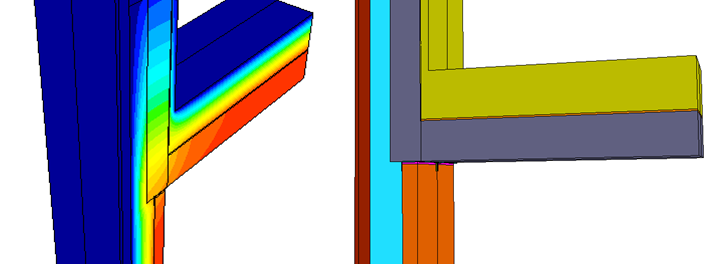
Developments designed and built to Part L 2021 of the Building Regulations may no longer utilise Accredited Construction Details (ACDs) for thermal bridging junctions.
It is still possible to use default thermal bridging values, but one is penalised for taking this route and in many instances, this will cause SAPs to fail Part L fabric energy efficiency. As houses become better insulated thermal bridges have an even greater significance. Going forward, junction details and Psi values will have to be taken from reputable non-government databases such as Local Authority Building Control’s Construction Details library or bespoke calculations undertaken by consultants such as ourselves.
In well insulated buildings, as much as 30% of heat loss can occur through thermal bridges, which occur when highly conductive elements (e.g. metal studs) in the wall construction enable a low resistance escape route for heat. In some cases, this can translate into an improvement in CO2 performance of upward of 17% and a fabric energy efficiency improvement of almost 23%. Dealing with thermal bridging remains a cost-effective method of achieving compliance.
Posted on February 25th, 2022
Author: Daniel Berkow
Related services: SAP (Domestic), Façade Optimisation, Thermal Bridging Analysis, Thermal Modelling, Energy & Fabric Performance Evaluation,